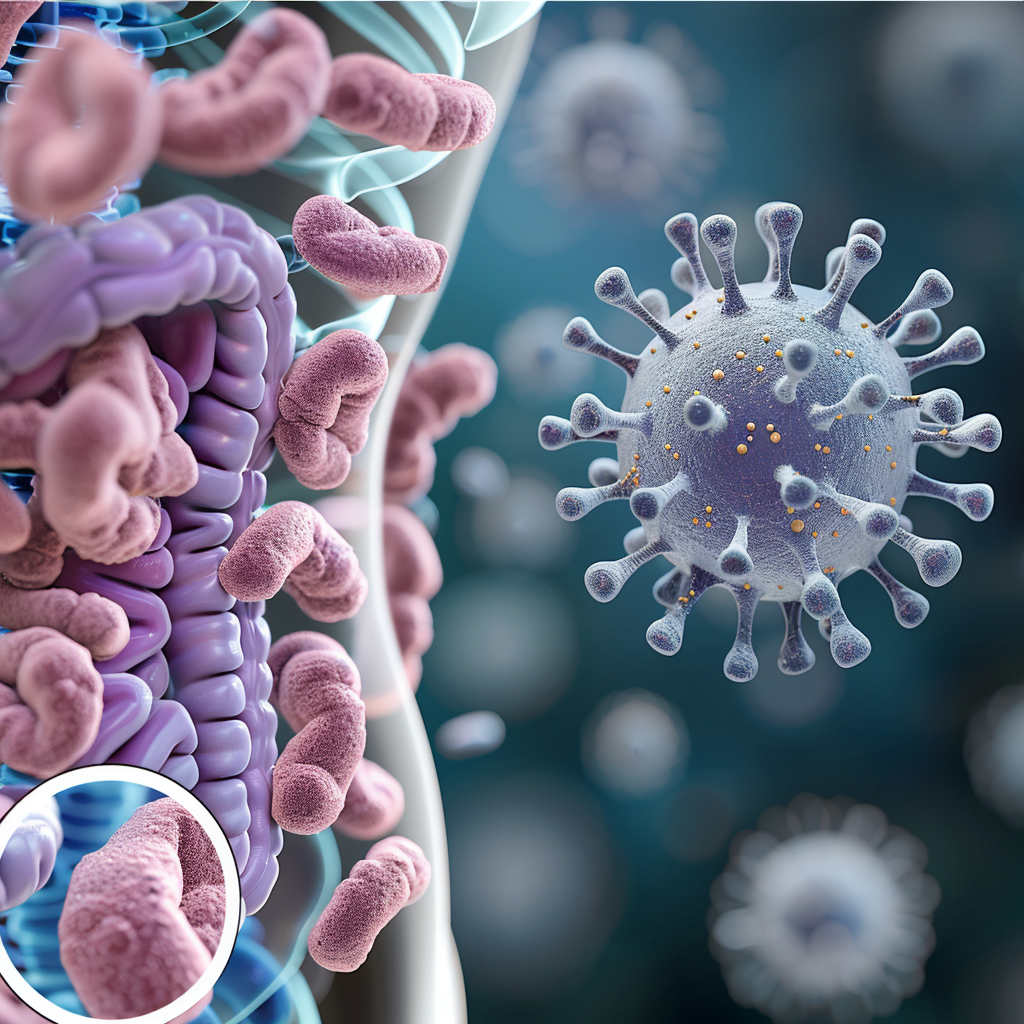Key points
- Transmission Possibility: Can you give your boyfriend a yeast infection? The answer is yes! It is possible for women to transmit a yeast infection to their male partner during sexual intercourse, although it is not highly common.
- Symptoms in Men: Men may experience symptoms such as itching, redness, and discomfort around the penis, or a white, clumpy discharge if they contract a yeast infection.
- Prevention and Treatment: Practicing safe sex, maintaining good hygiene, and seeking medical treatment with antifungal medications can help prevent and treat yeast infections in men.
Contents
- 1 Key points
- 2 Definition and Causes of Yeast Infections
- 3 Prevalence and Misconceptions
- 4 Importance of Awareness in Sexual Health
- 5 The Role of Candida in Yeast Infections
- 6 Factors Contributing to Yeast Overgrowth
- 7 The Body’s Ecosystem and Yeast Balance
- 8 Yeast Infections: Not Classically Sexually Transmitted
- 9 Circumstances Under Which Transmission Can Occur
- 10 The Role of Intimacy and Partner’s Flora
- 11 Strategies for Preventing Cross-Infection
- 12 The Importance of Open Communication with Partners
- 13 When to Seek Medical Advice Together
- 14 Treating Yeast Infections in Couples
- 15 Navigating Sexual Health as a Duo
- 16 Frequently Asked Questions (FAQ)
But hold your horses! It’s not just medical causes stirring up trouble; lifestyle factors, too, can lay out a welcome mat for yeast overgrowth.
Tight clothing or materials that trap moisture, hot and humid weather, poor hygiene, certain soaps or scents irritating the skin, antibiotics disrupting your natural flora – indeed, these can all encourage a Candida takeover.
Definition and Causes of Yeast Infections

Let’s clear the air: what exactly is a yeast infection? Simply put, it’s an irritation of the vagina and vulva characterized by itchiness, redness and discharge that often seems like cottage cheese. But don’t get misled – not all that itches down there signals a yeast infection; other culprits could be at play.
A closer look reveals a range of instigators behind these pesky infections. Hormones going haywire during pregnancy or due to birth control, uncontrolled diabetes mellitus stirring up sugar levels (a feast for fungi!), or even an immune system that’s lost its punching power might bring about this uncomfortable condition.
Prevalence and Misconceptions
Bet you didn’t know – nearly three-quarters of women will face off against a yeast infection at some point. That’s no small fry figure! Yet false beliefs abound.
You might’ve heard whispers that yeast infections are always transmitted sexually. Well, let’s nip that in the bud—it’s more complicated than passing germs back and forth.
Folks often mistakenly think if their partner gets a yeast infection then infidelity must be involved; however, that’s jumping to conclusions without all the facts. There is indeed potential for these infections to spread through sexual activity but remember—a myriad of factors out there don’t involve bedroom antics at all!
Importance of Awareness in Sexual Health

To wrap things up – knowledge is power when it comes to sexual health! Even though yeast infections aren’t classified as sexually transmitted infections (STIs), partners should definitely chat about it since symptoms can be experienced by anyone regardless of gender and may affect intimate relationships.
Bearing awareness ensures both parties can recognize signs early on and take action before things go south—this includes understanding transmission risks without defaulting to blame games. By paying close attention to one’s body and managing risk factors where possible—like sporting loose-fitting clothes—you’re taking steps toward keeping such issues at bay. And if concern pops up? Don’t shy away—a healthcare professional can help chart a course back to comfort.
At the heart of yeast infections lies an unassuming organism, Candida. This fungus resides in bodies without much fuss, typically playing nice with other microbes as part of the body’s complex internal community. However, when the delicate balance of this ecosystem goes awry, Candida may seize the opportunity to overpopulate, setting off a yeast infection. These ailments are not classic communicable diseases; they aren’t passed through casual contact or airborne pathogens like some sci-fi scenario.
The drama unfolds at a microscopic level. Our bodies host these fungal characters on surfaces such as the skin, and inside nooks and crannies like the mouth or vagina. Usually, the immune system keeps Candida from going rogue, but if immunity drops or microbial allies fall in number due to antibiotics, for instance – it’s showtime for an infection.
To be crystal clear – sexual activity can pass yeast infections between partners if conditions are prime: think moisture-drenched environments or disruptted microbiotas. It’s not common but hey, biology sometimes flips the script.
The Role of Candida in Yeast Infections

Cue Candida – the star of our yeasty predicament. Sure enough, this fungi is often a silent inhabitant within us, yet under rebellious circumstances it can ramp up numbers quick-fast. That’s when you end up with symptoms ranging from itching to full-blown discomfort. All thanks to Candida doing what it does best when left unchecked: multiplying rapidly and forming an unwelcome colony.
Factors Contributing to Yeast Overgrowth
Sure thing – let’s untangle this web a bit more. There’s quite a few culprits that can tip the scales in favor of a yeast bloom. The list reads something like this:
- Affinity for tight clothing that’s been buddies with humidity? Check.
- Hormones running wild during pregnancy? Yep.
- Diabetes not managed properly? You betcha.
- Broad-spectrum antibiotics KO’ing friendly bacteria? Absolutely.
- Poor nutrition trying to make an unhelpful mark? Unfortunately so.’
Add stress into the mix (because why wouldn’t we?), compromised immunity, or certain contraceptive methods and you’ve got yourself quite the bash lined up for Candida to thrive.
The Body’s Ecosystem and Yeast Balance
Inside your body, there are trillions of organisms including bacteria and fungi chill out together in harmony…most of the time anyway! See, everybody has their own role in maintaining homeostasis – that means keeping things just right inside your body.
If one player starts hogging resources or space (like Candida might), troubles brews quickly on the horizon. It’s all about teamwork here; bacteria that limit fungal growth get knocked out by stuff like antibiotics or pH changes, then expect to see Candida putting down roots where they weren’t meant to be.
In short, it takes just a wee disturbance in this inner ecosystem for yeast to turn from friend to foe – serving up those telltale signs of a yeast infection quicker than you can say “imbalance”.
Yeast Infections: Not Classically Sexually Transmitted

While it’s a common misconception that yeast infections are a textbook example of sexually transmitted infections (STIs), that’s not quite the case. Candida, the genus of fungus responsible for the majority of yeast infections, is often already present in your body without causing any trouble. It’s hanging around in places like the mouth, throat, gut, and yes, the genital area too. But it’s only when something knocks your system out of balance that this usually harmless tenant starts causing chaos.
Circumstances Under Which Transmission Can Occur
Although yeast infections aren’t strictly an STI, there are certain scenarios where sexual activity can play a part in their transmission. Think of it this way – if one partner has an active infection and things get particularly intimate, it increases the likelihood that those pesky yeasts will hitch a ride to the other person. Especially if that person’s immune system isn’t up to snuff, or if they’re taking antibiotics that might throw off their natural flora, this could give Candida just the right opportunity to set up shop.
The Role of Intimacy and Partner’s Flora

When you’re cozied up with someone, you’ve got more than sweet nothings being exchanged; there’s also microflora sharing going on. The mix of bacteria and fungi from both parties can shuffle around during sex, essentially creating a bit of a microbial melting pot. For most folks, this doesn’t cause issues – it’s all part of life’s rich tapestry, after all. But if your partner has a yeast population boom thanks to an imbalance or infection, that could potentially be passed over in the heat of the moment.
Let’s not forget, everybody’s personal flora is as unique as a fingerprint – so what’s perfectly fine for one person can be like rolling out the red carpet for a yeast overgrowth in another. Even though Candida is not your typical invader acquired through sexual transmission – looking at you gonorrhea and chlamydia – don’t wave off good hygiene and communication with your beau. It can go a long way in keeping both of you healthy and happy.
Yeast infections are often seen as a primarily female issue, yet they can also significantly affect men. Candida, a fungus frequently responsible for these infections, doesn’t discriminate by gender—it’s an equal opportunity bother. Even so, many guys might not be fully aware of the hazard this poses to their own health.
Symptoms and Diagnosis in Males
When it comes to symptoms in gents, there’s a little variety. Some men might experience itching or a burning sensation on their penis, commonly coupled with a distinctive white discharge. Others could notice redness or an uncomfortable rash around the genital area. These signs shouldn’t be brushed aside; instead, seek medical advice pronto for accurate diagnosis and treatment.
Factors Increasing Susceptibility in Men
You’d think it’d take something mighty unusual to trigger a male yeast infection but actually, everyday situations such as antibiotic use or diabetes can increase the likelihood of one developing. Other factors that might turn the tide include a compromised immune system or not drying off thoroughly after getting wet or sweaty.
The Misconception of Gender-Specific Infections
It’s time to bust the myth once and for all—yeast infections aren’t exclusive to women. They’ve got quite the reputation as a feminine predicament, yet reality tells us that men are at risk too. By spreading knowledge about male susceptibility and recognizing that it isn’t just a women’s issue, we can encourage everyone to stay vigilant regarding their intimate health—at least that’s the hope!
Strategies for Preventing Cross-Infection

Yeast infections can be a bit of a sore subject in intimate relationships, but navigating this sensitive terrain is key to preventing the ping-pong effect of cross-infection. It’s not rocket science, but it does need both partners to stand guard on the same page. One simple yet effective strategy is maintaining stellar hygiene habits; that’s a no-brainer. To notch things up, throw in some loose-fitting garments for good measure—your skin’ll thank you for it by breathing easier.
Another tactic is recognizing and dodging irritants like scented personal care products that could send sensitive private areas into a tizzy. Sometimes what’s meant to clean or spruce up can backfire, so it pays to stay clear of these potential triggers. Oh, and let’s talk about moisture down under—it’s like a yeast infection’s dream come true! Keep things dry and comfy by changing out of wet clothes pronto instead of lounging around in them.
Antifungal Medications
Don’t forget antifungal medications; they’re like your secret weapon. If one partner’s got an infection, both might need treatment even if symptoms are MIA for one of you. It’s only fair—if you’re sharing everything else, share this too. Last but not least, boosting your immune system with healthy lifestyle choices doesn’t just sound good on paper—it actually works wonders against those pesky yeasts.
The Importance of Open Communication with Partners
Pretending isn’t gonna make a yeast infection vanish into thin air; far from it! It takes two to tango when it comes to opening up a dialogue about these infections. Spill the beans about symptoms without making a mountain out of a molehill—it’s important, really! Talk about prevention measures as well—it’s kinda akin to discussing battle strategies before heading into war.
Honest conversations can sometimes save the day, steering clear of blame games while focusing on getting past the hurdle together. Besides, you’d be surprised how bonding over health hiccups can bring couples closer.
When to Seek Medical Advice Together

When things seem off despite doing everything by the book, it’s probably time to beat a path to the doctor’s door—yep, together. It’s more than just moral support; it’s also about keeping each other in the loop. Clearly, something’s gotta give if symptoms persist or keep playing peek-a-boo after treatment.
A trip to the doc is hardly anyone’s idea of date night, but consider it a joint venture for your wellbeing. You’ll likely get new insights or treatments that could finally nip the issue in the bud. Plus, let’s face it: few things scream commitment like tag-teaming a doctor visit for something as unglamorous as a yeast infection.
In essence, prevention takes a lil’ common sense mixed with some proactive measures; communication rides on transparency and supportiveness; seeking medical advice together—while not exactly fun—speaks volumes about tackling health issues as an unstoppable duo.
Treating Yeast Infections in Couples

When it comes to managing yeast infections within a relationship, the key is understanding that both partners may need treatment to prevent ping-ponging the infection back and forth. Candida, the fungus responsible for yeast infections, isn’t considered a sexually transmitted infection; however, sexual activity can facilitate its spread.
Approaches to Treatment for Yeast Infections
Treatment typically kicks off with antifungal medications. These can come in the form of creams, ointments, tablets, or suppositories. Over-the-counter (OTC) options are available but sometimes a healthcare provider might prescribe something stronger if OTC treatments don’t cut it. It’s really important for both partners to get treated at the same time – otherwise, you’re just going around in circles.
Coordinating Treatment to Prevent Reinfection
It’s kinda like a dance – you both gotta move in sync. So if one partner’s got a yeast infection, it’s wise for the other to be on lookout too. Even without symptoms, treating both partners is smart to avoid an endless tango of reinfection. This means following prescribed treatments simultaneously and steering clear of intimate contact until you’ve both gotten the all-clear.
The Role of Probiotics and Lifestyle Changes
Here’s where you go beyond medicines. Introducing probiotics either through diet (think yogurt or supplements), can help keep your gut flora balanced and may deter the overgrowth of yeast. Making lifestyle tweaks such as wearing loose-fitting clothes, opting for breathable materials like cotton underwear, and taking care not to stay in wet clothing too long also contribute to keeping yeast at bay.
In conclusion, managing yeast infections as a couple requires a tag-team effort – treatment with antifungals often needs coordination; probiotics and lifestyle adjustments are your backup dancers supporting overall health. By turning treatments into a duet instead of solo acts, reinfection becomes less likely, leading to better outcomes for both partners.

When involved in any romantic relationship, sexual health becomes a shared journey. It’s crucial that both partners are on the same page; this involves creating a space built on trust where conversations about health concerns can flow freely and without judgment. Being well-informed plays a huge role, not only does it dispel myths, but it also allows for proactive strategies to maintain sexual wellbeing to be put in place.
Constructing a Trust-Filled and Informed Relationship Basis
To steer away from misunderstandings and fears, especially when confronting issues like yeast infections, education is key. A candid dialog promotes awareness and helps couples tackle these matters without the needless stigma. It’s paramount for one another to understand that while yeast infections can cause discomfort, through knowledge and care, they don’t have to derail the warmth of your connection.
The Influence of Yeast Infections on Physical Closeness
Yeast infections, though not majorly categorized as sexually transmitted infections (STIs), can somewhat throw a spanner into the realms of intimacy. They’re pretty common and usually easy to manage, yet they can spark unease in physical relations. Embracing this challenge by staying supportive ensures that intimacy isn’t significantly hampered by temporary conditions.
Sustaining Long-Lasting Sexual Wellbeing While Preventing Yeast Infections
It’s better to be safe than sorry – and that rings true with preventing yeast infections over the long haul. Couples should consider habits like wearing breathable fabrics and maintaining good hygiene practices. Refraining from unnecessary antibiotic use which might throw off the balance of good bacteria is also wise. These steps aren’t merely precautions but rather acts of mutual respect for each other’s bodies and health.
In short, dealing with yeast infections calls for a little patience paired with an abundance of open conversations about how to keep both partners healthy and comfortable in their shared intimate spaces.
Frequently Asked Questions (FAQ)
Can yeast infections be triggered by stress or certain foods?
Absolutely. Stress and specific sorts of food, particularly those high in carbohydrates and sugars, can contribute to an imbalance in the body’s natural flora, leading to the overgrowth of Candida, the fungus responsible for yeast infections.
What should someone look for if they suspect oral thrush after engaging in oral sex?
If you’re worried about oral thrush post-oral sex, keep an eye out for symptoms like redness, discomfort or a scratchy sensation in the throat. White patches in the mouth or on the tongue may also appear. If these signs persist, it’s time to consult a doctor for proper diagnosis and treatment.
If recurrent yeast infections are plaguing a woman, what could be underlying factors?
Repetitive yeast infections might signal that there’s more to the story. Factors such as hormonal changes, antibiotic usage, poor hygiene habits, or even wearing tight clothing that traps moisture can play a part. It’s crucial to review these conditions with a healthcare professional.
How might individuals tap into technologies and online tools like livechat services for advice on sexual health topics like yeast infection?
Nowadays, technology has made it simpler than ever to access information. Websites often offer visitors tools such as livechat services for real-time advice on health topics including yeast infections. Just ensure they’re from credible sources like government health departments or renowned medical institutions.
When experiencing symptoms potentially indicative of a genital yeast infection, at what point should a person see a doctor?
Should you notice hints of a possible genital yeast infection—think discomfort, itching, or unusual discharge—you’d do well to visit your doc right away for an exam and subsequent treatment if necessary.
Could daily activities and personal hygiene practices influence one's risk for developing vaginal yeast infections?
Certainly. Unbeknownst to many, everyday activities and hygiene choices—how you groom yourself, what sort of soaps or sprays you use—can shift the delicate balance down there and inadvertently amp up your risk for vaginal yeast infections.
What measures can partners take during holidays and intimate times to control the spread of yeast infections among each other?
‘Tis the season…for caution! Partners can prioritize controlled hygiene—a must—and opt for loose clothing to allow things to breathe down there. It might not sound sexy but think cotton underwear over lace when deciding what goes under that mistletoe.
'My partner has been diagnosed with a fungal condition similar to thrush. What steps should we collectively take to manage this predicament?'
‘Two heads are better than one,’ they say—especially when facing health issues like fungal conditions. Both partners need to put their heads together and make sure their treatments are aligned while maintaining impeccable personal hygiene to prevent passing the infection back and forth.
'Could varying levels of acidophilus supplements assist women in gaining better control over recurrent Candida overgrowth?'
‘A stitch in time saves nine.’ Indeed! Probiotics containing acidophilus can help restore the friendly bacteria that keep Candida levels in check. But don’t start popping pills just yet; get some personalized guidance from your healthcare provider first.
Is it possible for men to develop symptoms resembling a vaginal yeast infection and what kind of signs would hint at this condition?
Men aren’t immune! While it’s rarer due to anatomical differences, guys can get hit with similar woes—a genital yeast infection presents itself with itchiness, redness around the penis area or sometimes discharge. So fellows shouldn’t shrug off these red flags but rather hightail it to their healthcare advisor.

I’m Kary Walters, a wedding planner and writer with a passion for helping couples stay together and achieve their relationship goals. With over a decade of experience, I specialize in self-improvement and have worked with individuals & couples facing challenges.